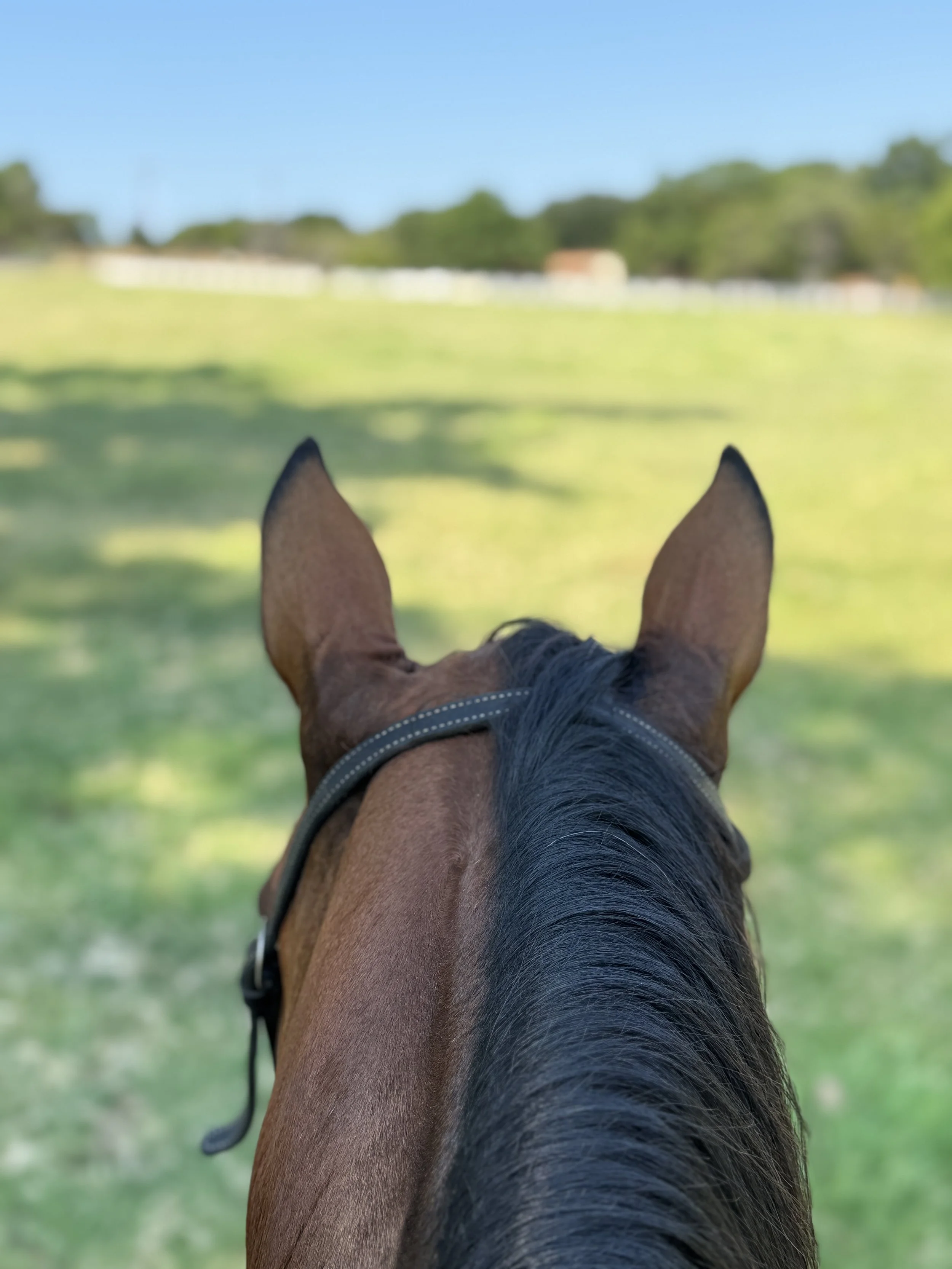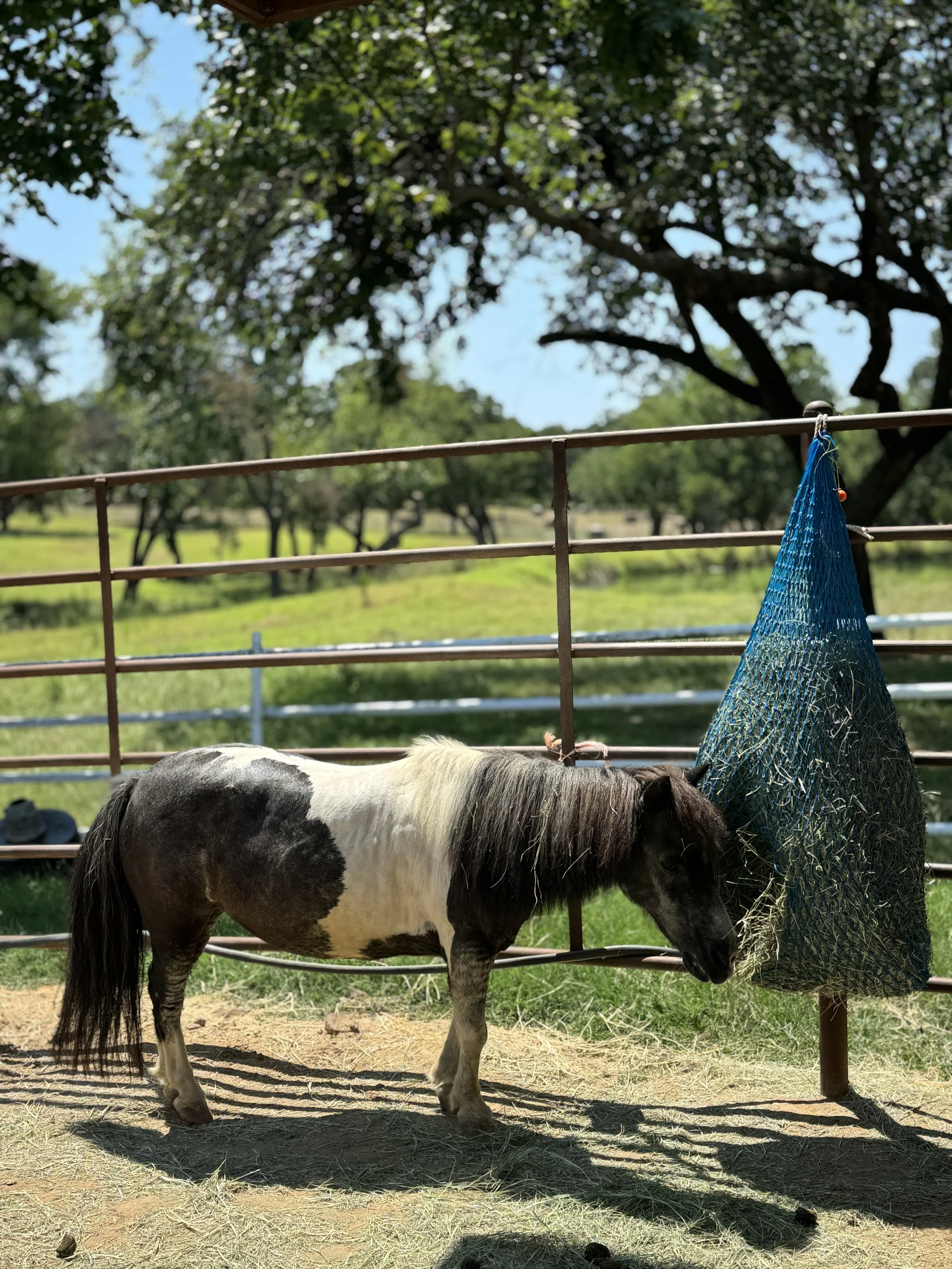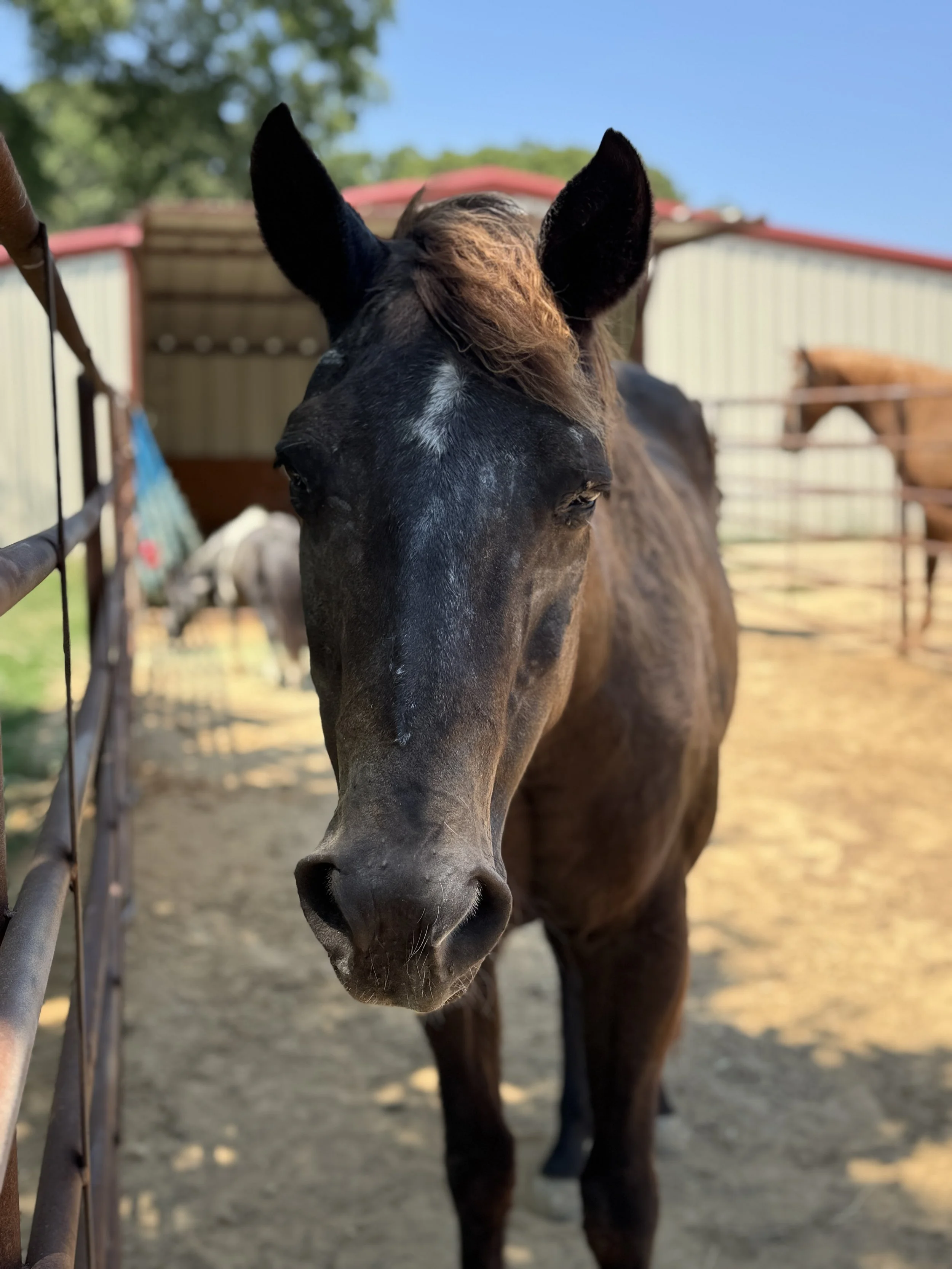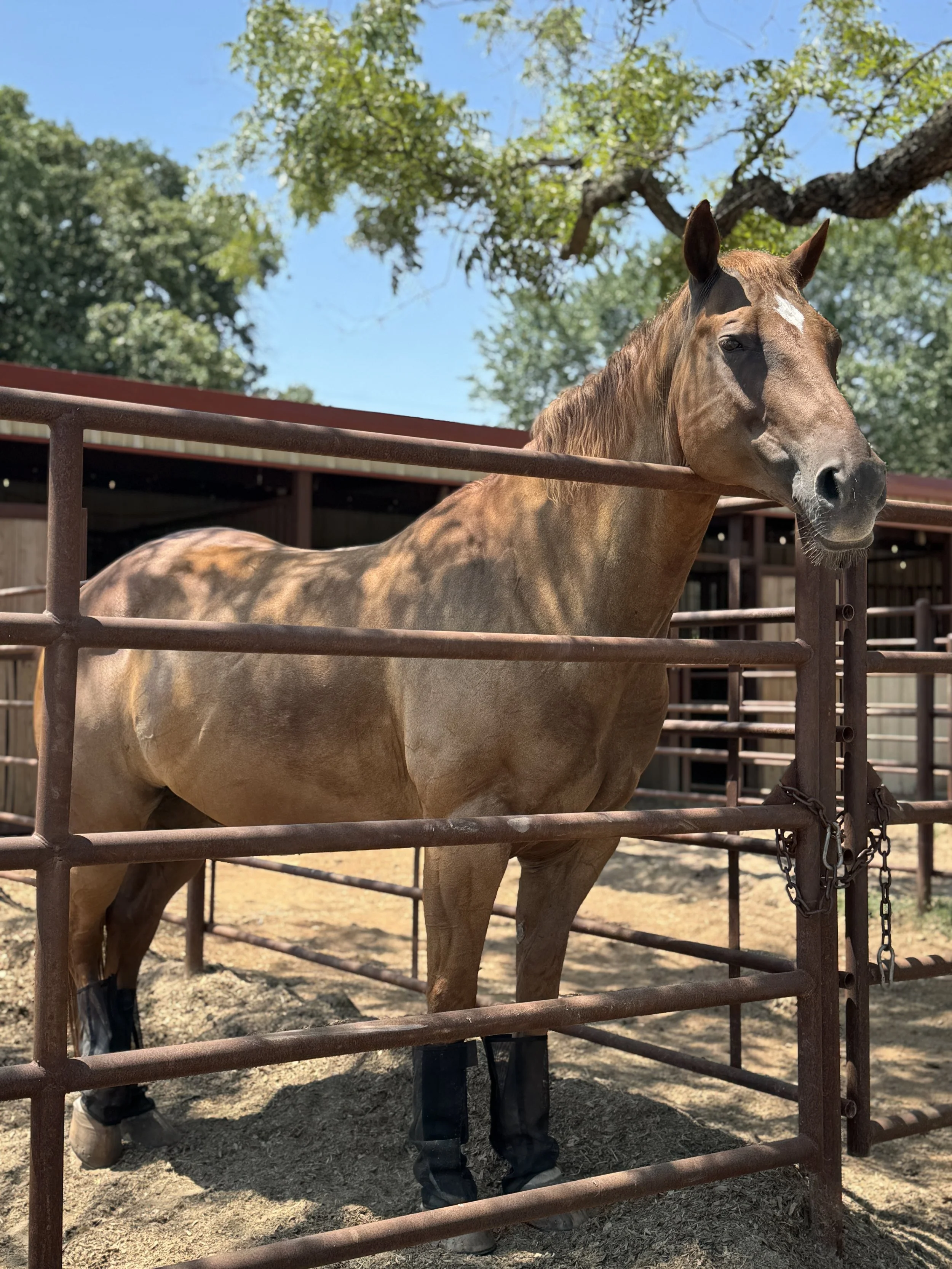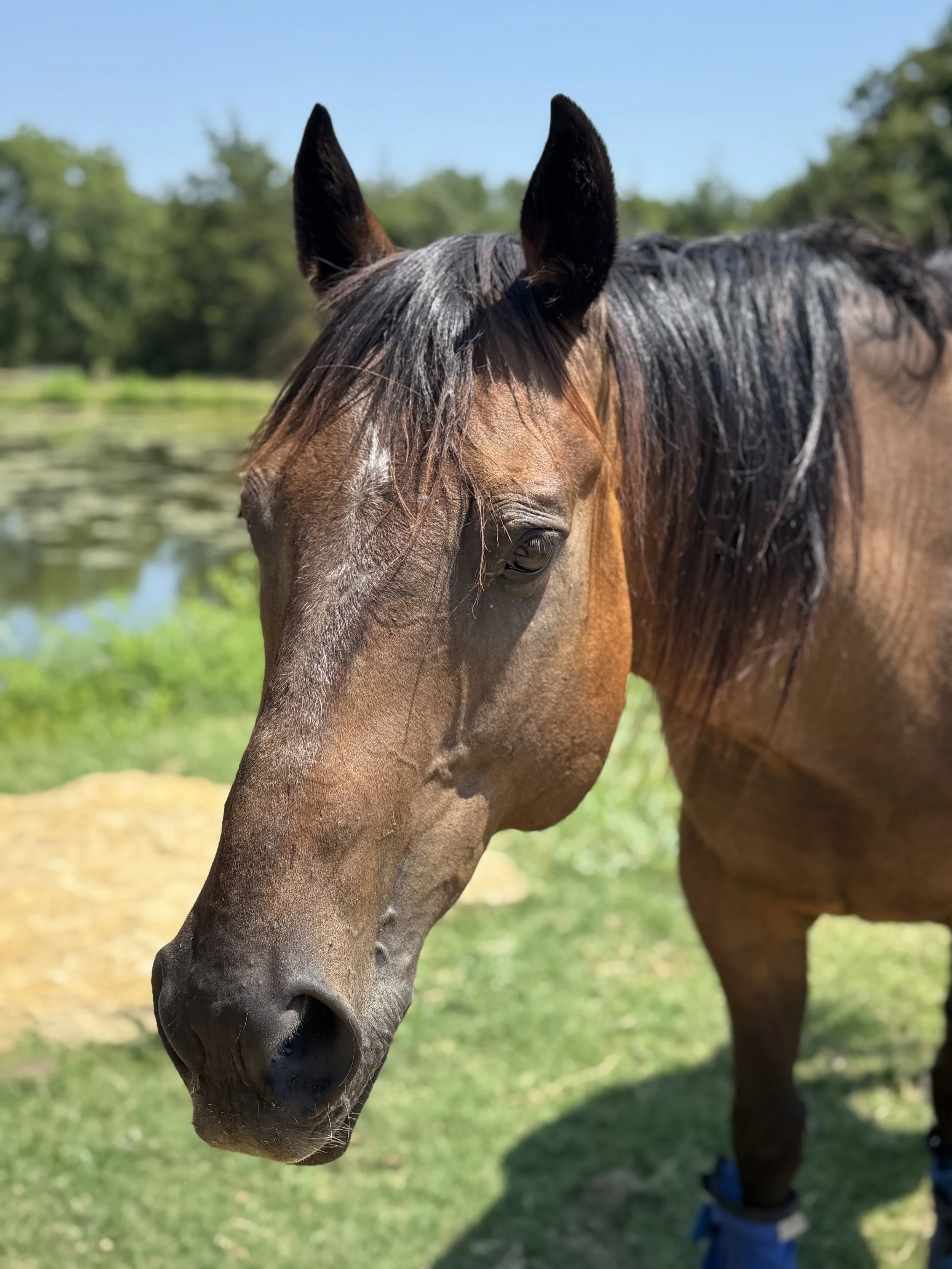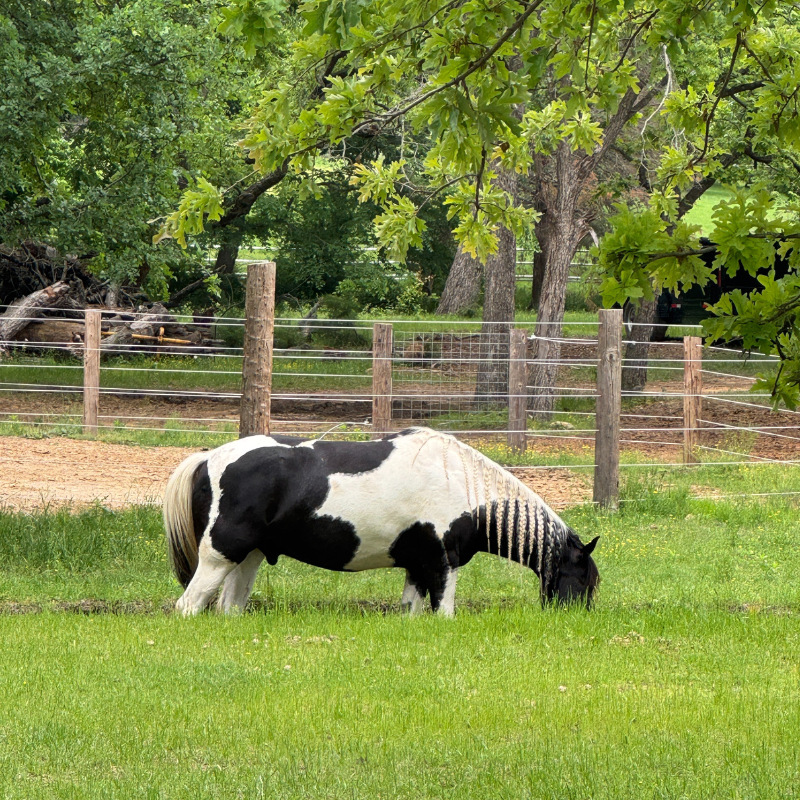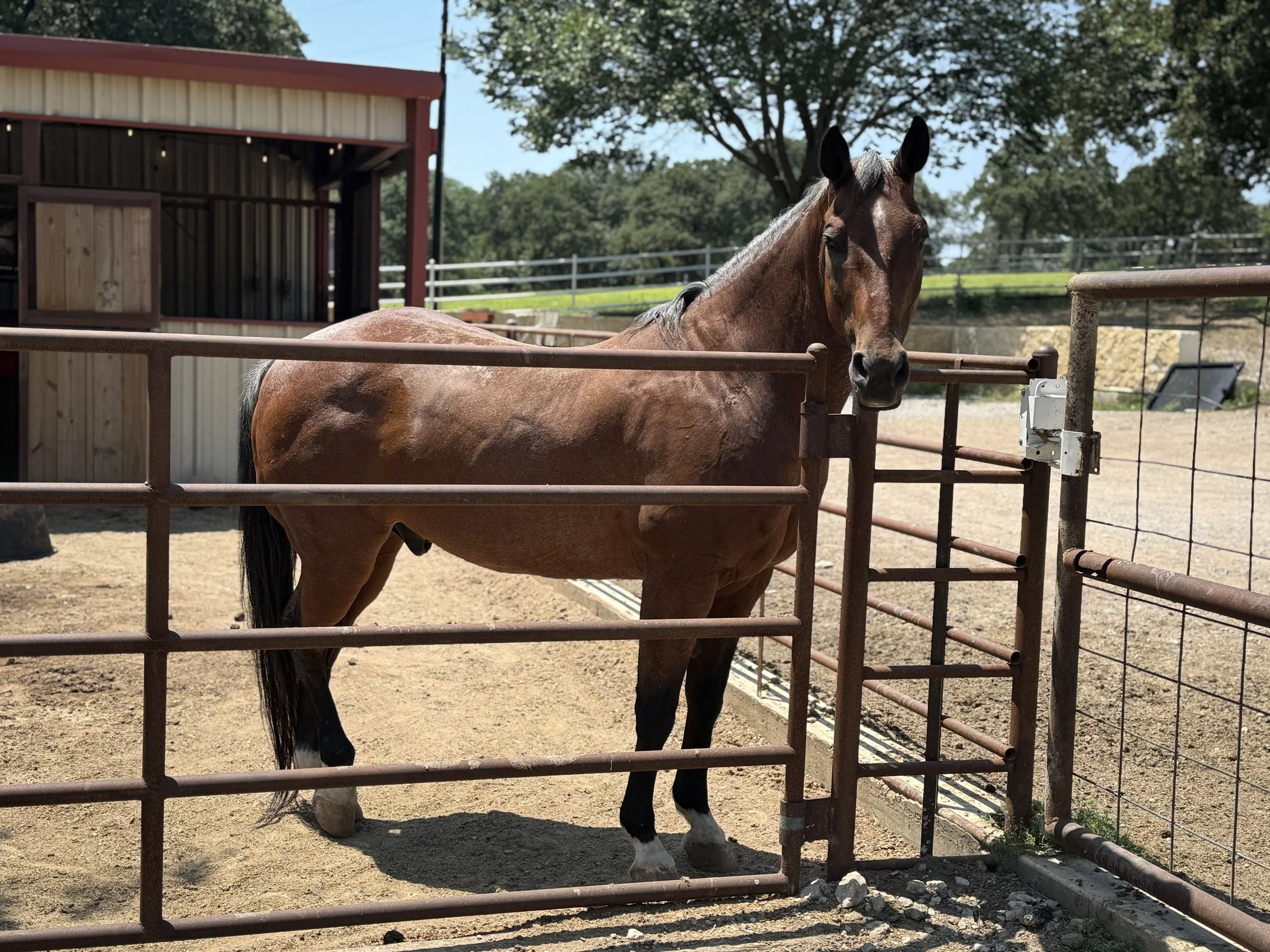August 15, 2025: Bee, Buddy Sour, and New Faces at the Barn
Bee getting to “rest” away from the herd. Read on to find out why.
I noticed this week that when I try to ride Bee around the barn property she does not want to go away from the barn. I took her out in the front pasture so she could see her herd mates and let her choose where to roam. Sure enough, she went straight to the herd and then did not want to move. She planted her feet despite my polite ask to step off. She even backed a few steps in defiance. I tried moving her left and right with no luck. While I am thrilled she loves her friends, we call this buddy sour.
Buddy sour, also called herd bound, describes a horse that becomes anxious when separated from a preferred buddy or the herd. You might see calling, jigging, rushing back to the barn, planting the feet, or small rears and spins. It is not stubbornness. Horses are prey animals and safety lives in numbers, so the brain says to stay with the group.
Why it happens has a few layers. Biology sets the stage because herd life is a survival strategy. Routine can strengthen the bond if two horses live, turn out, and ride together almost all the time. Training patterns add to it when returning to the barn always means rest and grain, which rewards the dash home. Discomfort can magnify anxiety. A horse that is sore, poorly fitted with tack, or dealing with ulcers will look for the comfort of a buddy more quickly.
Once I got Bee to move off a little, I put her to work near the herd. I trotted lots of circles and figure eights around them, then walked her a short distance away for a breather. (Thank you Ashley Holland of Rock Solid Performance Horses, my lessons pay off even when you aren’t present!) Let’s explore what the trainers say about buddy sour behavior:
Yes, that was the right approach. You make near the buddy the working place and away from the buddy the resting place. The keys are to keep the work near the herd purposeful but not frantic, give true rest and a loose rein a little way off, and build those sets gradually so the horse discovers that away from friends is the easy, quiet spot.
Here are three solid ways to improve buddy sour behavior.
Make away the easy place and near the buddy the working place.
Ride or hand walk toward the barn or buddy and do simple work there. Use small circles, serpentines, hindquarter yields, and walk halt walk transitions. Then walk away a short distance and let the horse rest on a long rein. Repeat in short sets. Over time the horse learns that being away is where the breathing and resting happen.Use gradual separation instead of all or nothing.
Start with the horses in sight of each other. Have a helper hold the buddy while you take the anxious horse ten to twenty feet away, then back, several times, waiting for a sigh, a blink, or a lick and chew before returning. Add distance in small steps. Switch roles so neither horse is always the one leaving. If the goal is to hack out, use a steady babysitter horse. Peel off for one minute, rejoin, then stretch those solo minutes ride by ride.Build focus on the handler through groundwork and simple patterns.
On the ground, practice purposeful leading with changes of speed, a few soft steps of backing, yielding shoulders and hips, and a head lowering cue. Under saddle, ride figures that require attention, like serpentines and shallow loops, instead of fighting a straight line toward home. Reward any try. Quiet hands, steady breathing, and clear releases matter. If you tighten up, your horse will mirror you.
Management helps the training stick. Rotate turnout pairings or use small groups so one intense attachment does not run the day. Vary who you ride with and when you leave and return. Skip feeding the moment you step back at the barn. Put a few minutes of easy work near the barn, then untack and feed so the barn does not equal instant reward. Check saddle fit, teeth, feet, and tummy comfort if the behavior feels new or extreme, and loop in your vet if needed. Safety first. Choose enclosed, familiar spaces for early reps, use a helper when you can, and progress at the horse’s pace.
Barn Roll Call
Barn roll call time. Halters are hung straight, hay nets are full, and the Ponderosa is humming. From seniors who have feeding time down to a science to a Tennessee Walker with a solar powered spa and a penthouse full of personalities, meet the neighbors who share Bee’s zip code. Consider this your friendly neigh borhood directory.
Chipper and Hailey
These two share a stall and we fondly call them Big and Little. Both are seniors who have perfected the art of peaceful living here at the Ponderosa. Little has figured out a clever way to make sure she gets her food as quickly as Big gets hers. Do not let the nap schedule or slow movements fool you. They run a tight operation at feeding time.
Silver Doll
Silver Doll is a Tennessee Walker who is very loved by Alicia and Michael. They give new meaning to creature comforts. Michael designed and built a stall fan that runs on solar power and is movement activated, so when Silver is eating in her stall she has a steady, breezy microclimate. It is horse spa engineering and we are all a little jealous.
Silver Doll. Look how pretty she stands at the rail. Head high, ears alert. Peep the solar panel on the stall roof.
The Penthouse Lineup
You might remember Levi. He was one of Bee’s first punching bags when she was in the back herd. He is still his confident self in the Penthouse, loved and doted on by Meg (she was a Rodeo Queen I introduced you to in a prior blog). He is joined by Royce, Spur, Dually, and Joker. You know Royce, the Paint who used to be Bee’s stall mate in the Penthouse. Spur is Royce’s new stall mate on the other side. She is a sweet giant of a horse who comes when called from pasture and can be seen running barrels with her owner on the Keller Rodeo team. Rounding out the barn are Dually and Joker. Dually and Joker need no long intro as you also met them in a prior blog post. Joker is off site getting a tune up for the Keller Rodeo season. Dually is still on site. He took over Sinjari’s stall and likes to talk to all the mares and geldings that pass by. He is a sweet boy who is recovering from an injury. He probably will not run with his Rodeo Queen, Sailer, in the Keller Rodeo this year but he is pampered all the same. Peep that grey mane.
There are a few more horses to introduce, but we will save them for another day. For now, Bee and I will keep chipping away at quiet steps “away” from the herd, one calm circle at a time.
PS. Don’t be surprised if there aren’t blog posts the next few weeks.

